It’s one of the most popular bridges in London, and in this post, you’ll discover the ultimate list of facts about the Millennium Bridge, a fascinating attraction in the city.
Related: Discover this list of stunning bridges.
1. Sorry, no cars are allowed
The Millennium Bridge allows you to cross the River Thames in the center of London. But be reminded, you can’t cross the bridge with your car as this is a pedestrian-only bridge!
If you want to cross the river with your car, you’ll have to take the nearby Waterloo Bridge, Westminster Bridge (upstream), Southwark Bridge, London Bridge, or Tower Bridge (downstream).
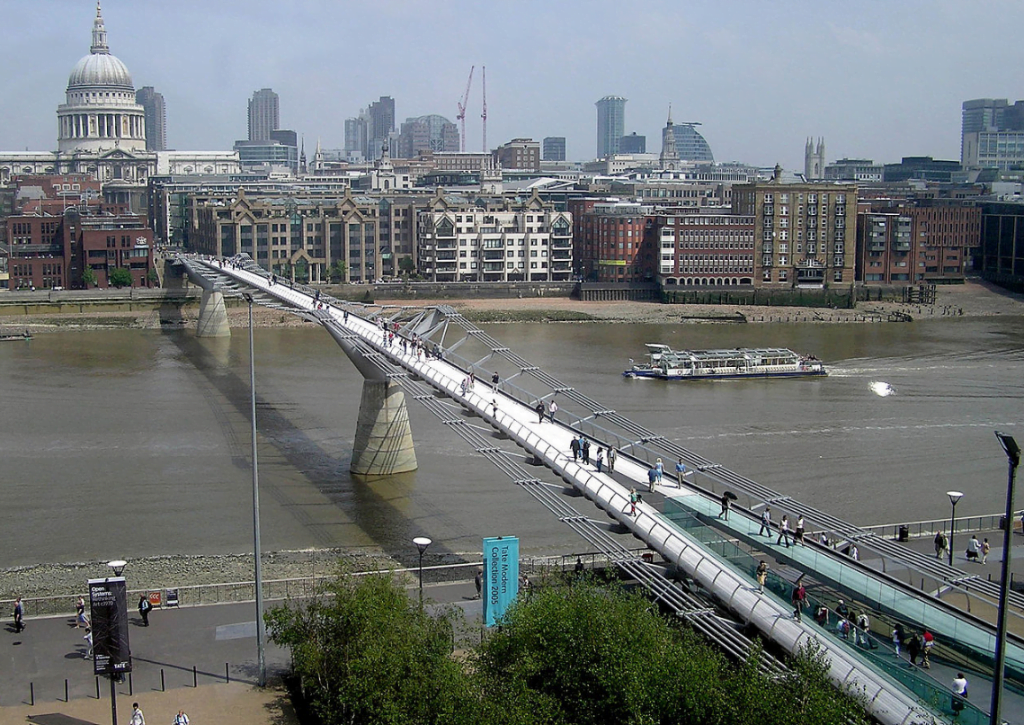
2. Where is the Millennium Bridge located?
The bridge is located right between the Blackfriars Bridge (which is a railway bridge), and the Southwark Bridge.
The southern end is located just west of Shakespeare’s Globe Theater (a reconstruction of the original Globe Theater), and just east of the “Bankside Gallery,” a public art gallery. It ends just near the Tate Modern, a modern art gallery.
The northern end ends just near the City of London School and looks in a direct line towards St. Paul’s Cathedral.

3. It offers a clear view of St. Paul’s Cathedral
One of the most interesting facts about the Millennium Bridge is that it offers a clear view of the St. Paul’s Cathedral for pedestrians on the bridge.
This effect is referred to as a “Terminating Vista,” which gives you the idea that the bridge is ending at the building itself.
On top of that, the bridge’s support gives the effect as if they are framing the façade of the cathedral as well.
This is the perfect spot to take an amazing picture of St. Paul’s!

4. It’s a steel suspension bridge
Did you think that suspension bridges were all huge bridges such as the Golden Gate Bridge, the Manhattan Bridge, or the Brooklyn Bridge?
Well, the Millennium Bridge is a suspension bridge as well!
Suspension bridges are constructed in such a way that the deck is hung below suspension cables beneath vertical suspenders.

5. It has a unique design feature
The bridge wasn’t constructed in the same way as most traditional suspension bridges are constructed though. This is for the reason that there was a height restriction in the area.
Instead of building huge vertical suspenders that would be used to attach the 8 supporting wires on, they are simply pulled against the piers that support the entire structure inside the river.
At some points, the suspension cables are even hanging below the deck level!

6. How big is the Millennium Bridge?
The bridge has a total length of 325 meters (1,066 feet) and because it’s a pedestrian bridge, it’s only about 4 meters (13 feet) wide.
It consists of 3 separate parts, one being 81 meters (266 feet) long, another being 144 meters (472 feet), and the final part being 108 meters (354 feet) long.
The longest span over the river is 144 meters (472 feet) long.

7. It can hold thousands of people
The 8 suspension cables that support the bridge are pulling with a combined force of 2,000 tonnes. This allows for a maximum of 5,000 people to be on the bridge at the same time.

8. The bridge had a very reputable engineer
To say that the structural engineer of the Millennium Bridge was a reputable one is an understatement. The bridge was designed and built by the Arup Group, one of the most reputable architectural firms in the world.
This London-based company has 96 offices in 35 countries worldwide and has completed projects in 135 different countries. Some of the most notable projects the company was involved in were:
- The International Finance Center in Hong Kong
- The Canton Tower in Guangzhou
- Marina Bay Sands in Singapore
- The Sydney Opera House
- Le Centre Pompidou in Paris
- The London Eye
- The Shard in London (the tallest skyscraper in London)

9. An Act of Parliament wasn’t needed
Another one of those cool facts about the Millennium Bridge is that the final design was actually chosen through a competition.
The initiative was launched back in 1996 by the Southwark Council and RIBA Competitions, with the Arup Group ending up submitting the winning design.
For a bridge to be constructed though, an Act of Parliament must be passed for the approval of such a project.
Because the “Port of London Authority” had granted a license to the City of London and the Southwark Council, such an act wasn’t necessary.
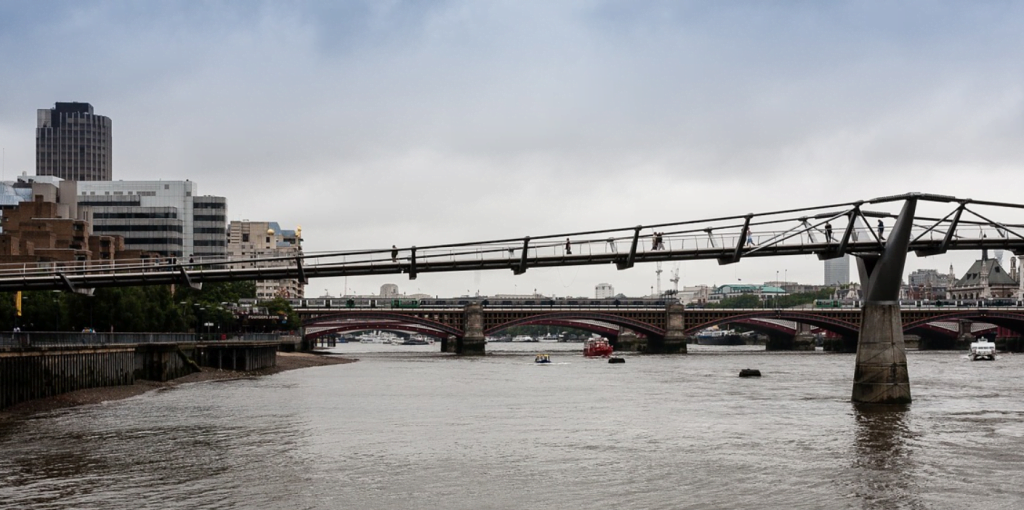
10. Construction started in 1998
The Millennium Bridge was the first bridge to be constructed in London, spanning the River Thames, for over 100 years.
The start of the construction of the Millennium Bridge was therefore a pretty amazing moment. This moment happened in late 1998 when preparations were being made to get started. The main construction works started on April 29, 1999.
The main contractors executing the work were Denmark-based Monberg & Thorsen, and London-based Sir Robert McAlpine.
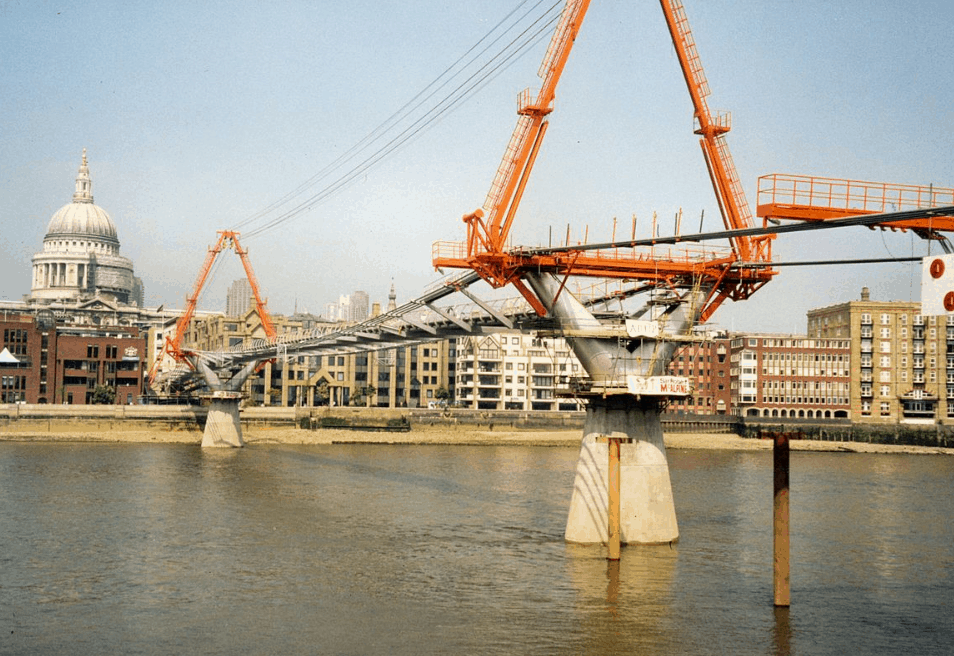
11. The original budget didn’t suffice
The construction of the Millennium Bridge came with a hefty price tag, which was supported by the “Millennium Commission” and the “London Bridge Trust.”
The original budget was set at £16 million, but the budget was exceeded by £2.2 million, resulting in a total cost of £18.2 million.
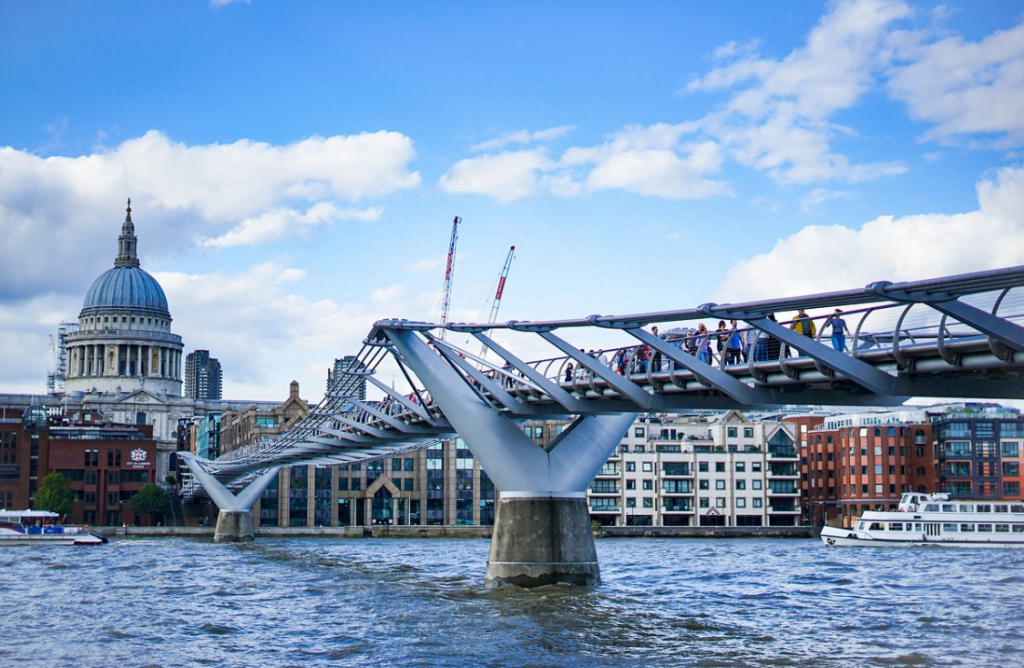
12. This is what you call a botched opening
Regardless of the bridge having a reputable engineer, things went wrong anyways. Just 2 days after the bridge was opened on June 10, 2000, and nearly 100,000 people crossed it that day, it was closed again because of structural problems.
A phenomenon referred to as lateral vibration due to resonant structural response was the reason that the bridge was closed again on June 12, 2000.
Small movements were amplified by what the “Arup Group” explained as “synchronous lateral excitation,” which simply means that people walking on the bridge adjust their step according to the sway of the bridge, something that actually reinforces the effect.
Either way, this unexpected problem resulted in a completely botched launch!
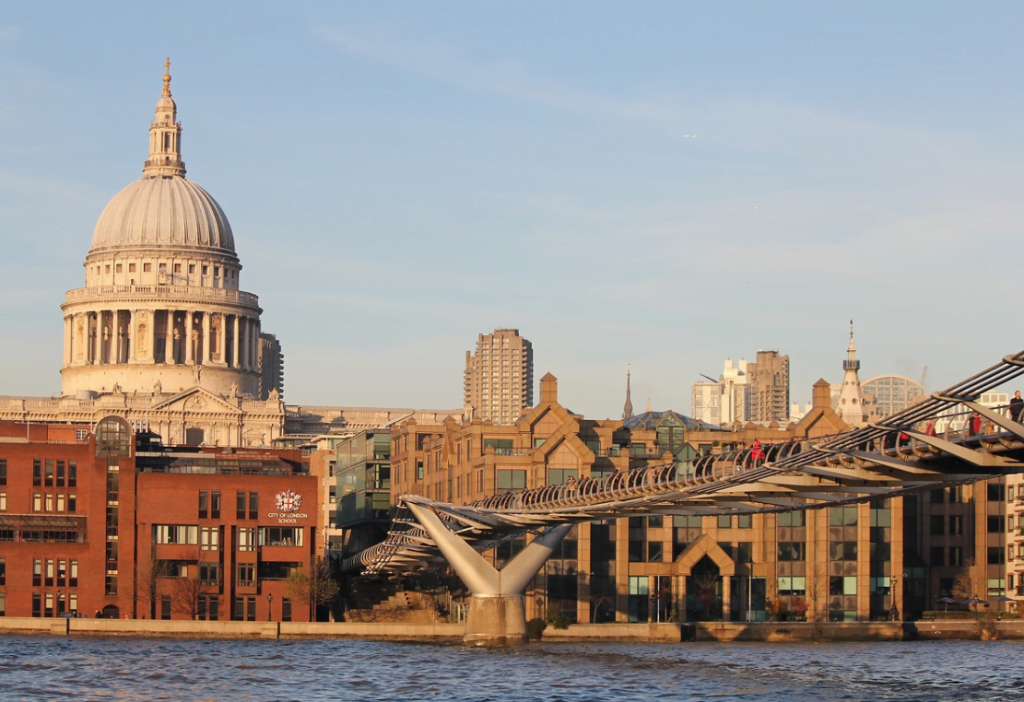
13. The bridge was only reopened in 2002
The Arup Group was challenged with solving the issue and conducted multiple tests with hundreds of pedestrians in the year 2000.
The eventual conclusion was that attaching dampers to the bridge to absorb the lateral movements was the way to go.
They installed a total of 37 fluid dampers and 52 tuned mass dampers on the bridge which solved the issue once and for all.
Price tag: £5 million!
The Millennium Bridge eventually reopened to the public on February 22, 2002.
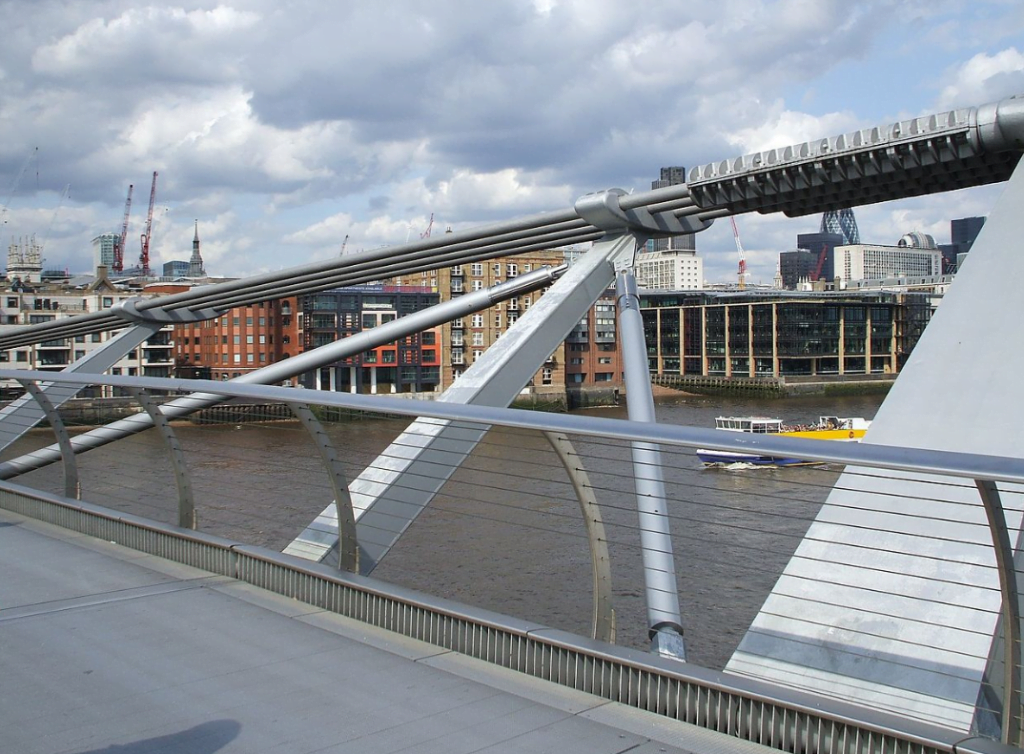
14. Its mocking nickname remains in use among Londoners
As soon as Londoners were allowed to cross the Millennium Bridge, they noticed the serious wobbly effect that the lateral movements caused.
Therefore, even though this effect was completely resolved during the modification made by its engineer, it’s still referred to in London as the “Wobbly Bridge” until today.
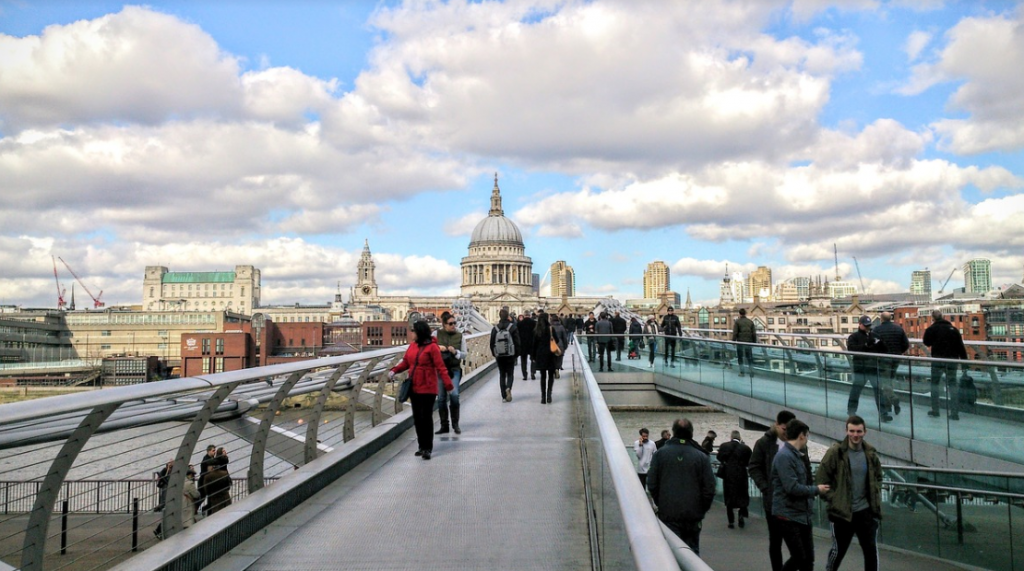
15. The bridge is covered in art
A man referred to as the “Chewing Gum Man” has been busy painting little pieces of art on the Millennium Bridge.
And no, we’re not talking about the illegal graffiti you sometimes see covering entire bridges in big cities!
Ben Wilson spent several months painting over 400 pieces of art over discarded chewing gum.
He refers to it as “The chewing gum is already there. I’m just transforming it into something beautiful that people would like to look at.”
An amazing example of how a little creativity can make the world a more beautiful place!

16. It produces an orchestra of cable resonance
The cables of the Millennium Bridge are actually producing higher-frequency resonances. Acoustic transducers were used to bring this sound into the Tate Modern Museum.
This sound effect was part of Bill Fontana’s ‘Harmonic Bridge’ exhibition in mid-2006.

17. It’s not the only Millennium Bridge in the world
Apart from the Millennium Bridge in London, there are a total of 12 more bridges with the same name in 7 different countries.
The longest one is the Millennium Bridge in Kazan, Russia, with a total length of 835 meters (2,740 feet).
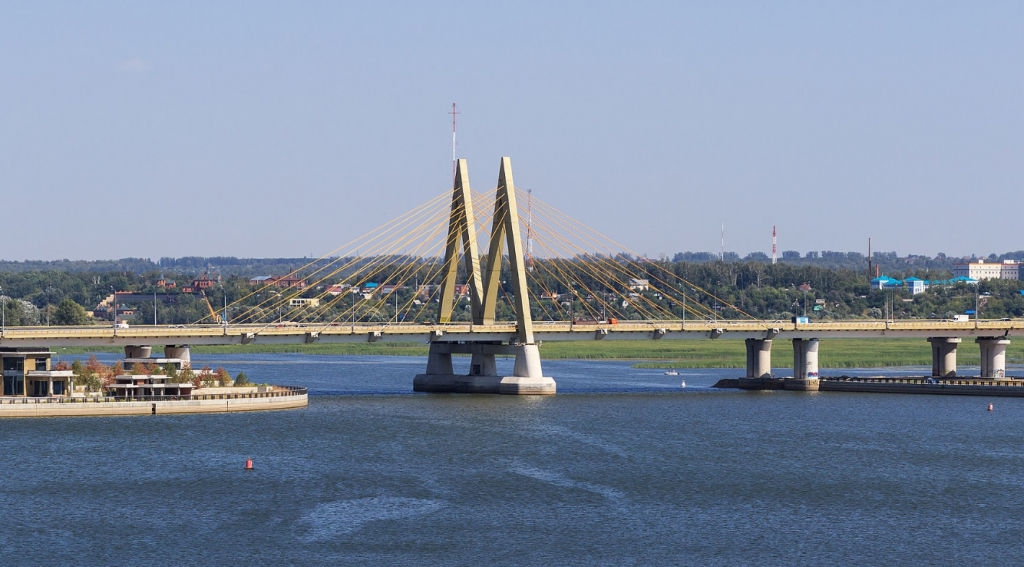
18. It collapsed in one of the Harry Potter movies
The Millennium Bridge in London has made an appearance in multiple movies and television shows. One of the most famous is when it starred in “Harry Potter and the Half-Blood Prince” (2009).
You can watch it being destroyed by “Death Eaters” in the video below:
19. It appears in the epic battle of Xandar
If you check out Marvel’s “Guardians of the Galaxy” movie (2014), then you can also notice the bridge appearing during the final battle on Xandar.



